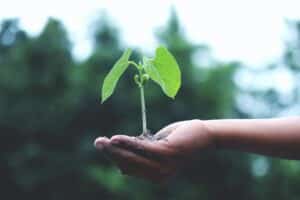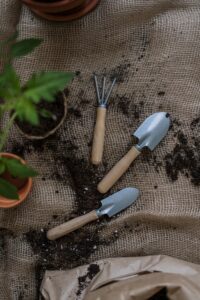

Try not to get overanxious. You need to pay attention to not only the air temperature but soil temperature also.
The most important requirements for seed germination are heat and moisture, and the amount and duration of each necessary for a specific vegetable. Germination temperatures should be constant at 70° to 80°F. Time to germinate doubles for each ten degrees the temperature drops below the ideal level. Seeds of summer or hot weather vegetables will not sprout at lower temperatures. Here is more information on vegetable seed sowing, as well as a chart of specific germination temperatures and times. You can also find a chart concerning flowers.
These requirements apply to your transplants, too. If you put warm weather crops such as tomatoes or peppers out too early, the roots might rot or at best, simply sit there doing nothing until soil and air temperatures provide the correct atmosphere for them.
Now that you can choose the proper time for plantings and you have your equipment that we listed last month, let’s consider the how:
- Review the seed packet for planting information
- Place your sterile seed starting mix in a container and moisten it. Fill your pots. Place about three seeds in each, cover lightly with soil, and spray to moisten.
- Cover and place in a warm area, preferably with a heat mat. Spray lightly daily to keep moist.
- Uncover when seeds have germinated and make sure they have sufficient light. Begin half strength fertilization now.
- When plants have developed and outgrown starter pots, either transplant to larger pots or to the garden if time and temperature are appropriate. Ensure they have been hardened off (we will have a whole article next month on this!) before

You can find much more detailed information shared by April and Gayle on starting seeds here.